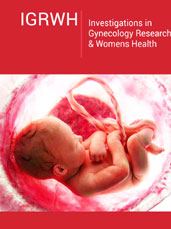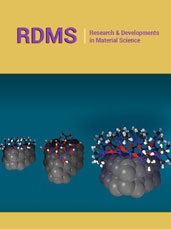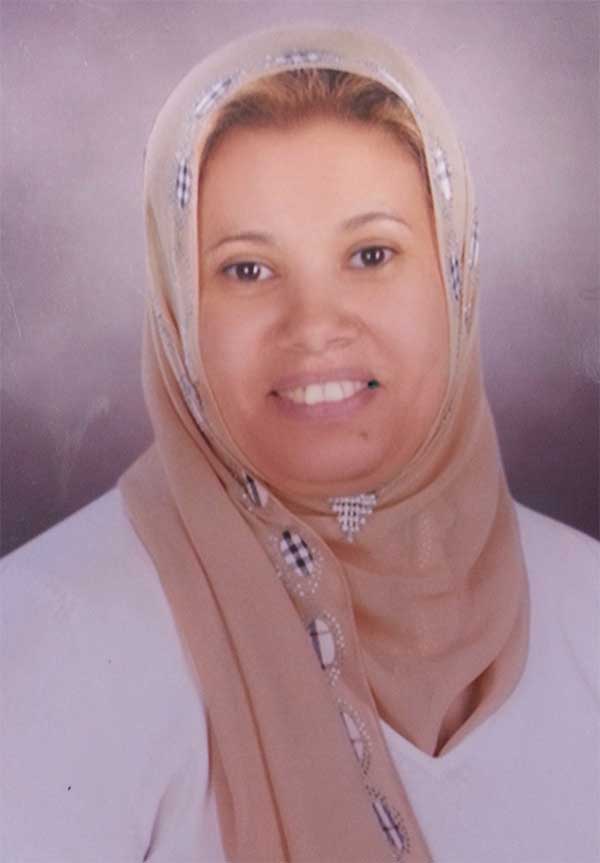- Submissions

Full Text
Investigations in Gynecology Research & Womens Health
Mayer- Rokitansky-Kuster-Hauser Syndrome - A Puzzling Case!
Suresh Kishanrao*
Family Physician & Public Health Consultant, India
*Corresponding author:Suresh Kishanrao, Family Physician & Public Health Consultant, Bengaluru, Karnataka, India
Submission:January 17, 2025;Published: January 29, 2025

ISSN: 2577-2015 Volume5 Issue3
Abstract
Mayer-Rokitansky-Kuster-Hauser (MRKH) syndrome is an uncommon congenital malformation of the female genital tract during the prenatal development due to lack mullerian hormone. The aetiology is polygenic multi-factorial; occasionally, due to a genetic mutation or deletion of genes on chromosome 16 MRKH occurs when the Müllerian duct derivatives don’t fuse during foetal development and results in lack of mullerian hormone which is crucial for development of vagina and uterus. As the ovaries, are formed separately, they are normal. Patients with MRKH have normal breast development, sexual body proportions, body hair, and hymenal tissue. They have 46 XX as karyotype genetics, but pre-natal genetic testing can’t detect these defects. As MRKH syndrome impacts females’ anatomy, treatment involves i) lengthening vagina, either through coital dilation or through a dilator over a period of six months. If dilatation fails surgical neovagina construction is the next option and opt for IVF & Surrogacy for bearing a baby if they desire to have children of their own need to go for uterine transplantation. Uterine transplantation has evolved since 2011 & established globally by 2017.
Materials and methods: This article is based on case reporting to one of the tertiary care hospitals in a professional lady of 28 years in November-December 2024 and relevant literature review.
Outcome: The patient was hospitalized for a week and neovagina reconstruction was done successfully using tissues from her groin. At follow-up after one month, she was normal with vaginal sensation. She and her family were informed that she can’t bear a child of her own due to want of uterus, but her healthy ovaries will have ovum, and she can look forward for baby with surrogate uterus. In a recent follow up on 10 January 2025 she was looking exceptionally well and confident hoping for a bright future.
Keywords:Vulva; Vagina; Cervix; Uterus; Ovaries; Fallopian tubes; Clitoris; Xray; MRKH dilatation; Neovagina; Uterus transplantation
Abbreviations:MRKHS: Mayer-Rokitansky-Kuster-Hauser-Syndrome; MH: Mullerian Hormone; MRI: Magnetic Resonance Imaging; AMAFB: Assigned as Female at Birth; AMAB: Assigned as Male at Birth
Introduction
A female’s reproductive system is the body parts that help her to i) have sexual intercourse ii) Reproduce and iii) Menstruate. Womanhood is bestowed with internal anatomical reproductive organs like a pair ovary, a uterus and vagina and secondary characteristics of Breasts, long hair and hourglass figure. Biologically, life stages of a typical woman are divided into infancy, puberty, reproductive age, climacteric period, and elderly years [1,2].
Mayer-Rokitansky-Kuster-Hauser (MRKH) syndrome is an uncommon congenital malformation of the female genital tract during the prenatal development due to lack mullerian hormone. Its features include partial or complete absence (agenesis) of the uterus with an absent or hypoplastic vagina, normal fallopian tubes, ovaries, normal external genitalia and the typical 46, XX, female chromosome pattern. Breast development and growth of pubic hair are normal. Associated renal and/or skeletal abnormalities are also common. The condition is characterised delayed menstrual period until age 16, shortened vaginal canal, in depth and width or even absence of vagina. It’s often identified when very painful or difficult sexual intercourse or infertility. One can see a significant psychosocial impact on the affected person. Magnetic Resonance Imaging (MRI) is the mainstay in the imaging evaluation of mullerian agenesis, but is not routinely being utilized, particularly in India. This condition is estimated to occur in one among 5000 women globally [3].
The aetiology is polygenic multi-factorial; occasionally, due to a genetic mutation or deletion of genes on chromosome 16. The normal external appearance of MRKH females makes it difficult to diagnose until puberty, typically diagnosed in midadolescence. The average age of diagnosis is between 15 and 18 years. Occasionally a girl may be diagnosed at birth or during childhood by observant mother or because of other health problems. MRKH occurs when the mullerian duct derivatives don’t fuse during foetal development and results in lack of mullerian hormone which is crucial for development of vagina and uterus. For practical guidance the syndrome is divided into two categories- I) Type1 Isolated uterovaginal aplasia ii) Type 2 associated with extragenital manifestations, such as renal, skeletal, ear, or cardiac malformations. Patients with MRKH can’t become pregnant as their heir uterus in rudimentary, but they can conceive and have baby with the help of a surrogate uterus. This article is based on case reporting to one of the tertiary care hospitals in a professional lady of 28 years in November-December 2024, managed appropriately and relevant literature review.
Case Report
Aparna a beautiful computer software engineer girl aged 28 years reported to a private tertiary care hospital in Bengaluru recently with the complaints of severe abdominal pain. Similar pain was experienced every month for 3-5 days. On examination she had all external signs of a female, but her vagina was unusual. Detailed history revealed that she was born without a vagina, but only a urethra. For the first time at the age of 14 years she was examined by primary health centre doctor and informed about the absence of vagina and advised to keep a track and seek a gynaecologists advise. Next year another doctor made a similar observation, but as she did not have her menarche they waited for another year. After the age of 16 years, she used to have monthly stomach-ache for 3-5 days. An abdominal scan during one such episodes, confirmed absence of uterus and presence of ovaries. In multiple consultations she was advised a surgery. It was in November 2024 she visited this private tertiary hospital, where she was diagnosed as a case of Mayer- Rokitansky-Küster-Hauser (MRKH) syndrome II which involves agenesis of the uterus and vagina.
An MRI revealed in this case enlarged rudimentary uterine horn but healthy well-developed ovaries (Figure 1 & 2). The lady and her sister were informed, consent taken and laparoscopic surgical approach was taken. Her rudimentary uterine horn was removed, and vaginal reconstruction was done using her own groin muscle creating a functional and anatomical appropriate vaginal structure. She was hospitalized for a week. A follow-up after one month she was normal lady with vaginal sensation. She and her family were informed that she can’t bear a child of her own due to want of uterus, but her healthy ovaries will have ovum, and she can look forward for baby with surrogate uterus. In a recent follow up on 10 January 2025 she was looking exceptionally well and confident hoping for a bright future.
Figure 1:Axial T2W image at the level acetabulum showing absent vagina between the bladder& rectum.

Figure 2:Axial T2W image at a higher level demonstrates normal ovaries with follicles.

Discussion
A female’s reproductive anatomy includes both external and internal parts. External parts called genitals protect the internal parts from infection and allow sperm to enter the vagina. Uterine malformations occur in about 1-5 of 1000 all women.
Vulva
Vulva is the collective name for all external genitals, and it consists of i) Labia majora that encloses and protects all other external reproductive organs like labia minora, Vagina, Hymen, and Urethra (Figure 3-Lower). During puberty, hair growth occurs on the skin of the labia majora, which also contain sweat and oilsecreting glands ii) Labia minora have a variety of sizes and shapes and lie just inside the labia majora and surround the openings of vagina and urethra. This skin is very delicate and gets easily irritated and swollen iii) Clitoris is located at the meeting point of two labia minora, is a small, sensitive protrusion that’s comparable to a penis in people Assigned as Male at Birth (AMAB). It is covered by a fold of skin called the prepuce and is very sensitive to stimulation iv) Vaginal opening that allows menstrual blood and babies to exit her body and fingers, sex toys or penises and Tampons, go inside the vagina through this opening v) Hymen is a piece of tissue covering or surrounding part of vaginal opening, formed during development present at birth vi) Urethra is the opening is the hole to pee from.
Internal parts
i) Vagina is a muscular canal that joins the cervix to the outside of the body. It widens to accommodate a baby during delivery and then shrink back to hold something narrow like a tampon. It’s lined with mucous membranes that help keep it moist ii) Cervix is the lowest part of the uterus. A hole in its middle allows sperm to enter and menstrual blood to exit. Cervix expands to allow a baby to come out during a vaginal childbirth. It prevents things like tampons from getting lost inside the body iii) Uterus is a hollow, pear-shaped organ that holds a foetus during pregnancy. It is divided into two parts a) the cervix & b) the corpus - the larger part that expands during pregnancy iv) Ovaries are small, oval-shaped glands that are located on either side of your uterus and produce Ovum and hormones v) Fallopian tubes are narrow tubes attached to the upper part of the uterus and serve as pathways for ovum to travel from ovaries to the uterus. Fertilization of an egg by sperm normally occurs in the fallopian tubes. The fertilized egg then moves to the uterus, where it implants into the uterine lining (Figure 3-Upper).
Figure 3:Female reproductive System.

In the Mayer-Rokitansky-Kuster-Hauser (MRKH) syndrome, is caused when the channels that normally form the fallopian tubes, uterus, cervix, and the upper two-thirds of the vagina do not get formed for various reasons. The external genitalia appear normal, but with a shallow vaginal pouch. Other symptoms include hearing loss and kidney and/or spinal problems, with variations in these organs are affected. The key point to note is that the ovaries, formed separately, are usually normal. Patients with MRKH have normal breast development, normal secondary sexual body proportions, body hair, and hymenal tissue. They have 46 XX as karyotype genetics, but pre-natal genetic testing can’t detect these defects. MRKH does not become evident until a woman reaches puberty & has primary amenorrhea. If the first menstrual cycle has not occurred within three years of the onset of breast development, it is important to consult a gynaecologist for further evaluation. Magnetic Resonance Imaging (MRI) is the mainstay in the imaging evaluation of mullerian agenesis, but is not routinely utilized, in India. A sagittal MRI clearly demonstrates the absence or hypoplasia of the uterus, and the axial images demonstrate the normal ovaries. Some women may congenitally lack uterus, fallopian tubes cervix, and vagina due to sporadic genetic mutation or embryonic developmental factors as was in our case (Figure 4).
Figure 4: Female Reproductive System in Normal & MRKH Female.

Cadaveric case report
Figure 5: MRKH as seen in a cadver.

Discovery of MRKH in a cadaver was reported in September 2024 upon routine dissection, that provided insight into the anatomical implications and organ compensation that can occur over time with this pathology [4]. There are two different subtypes of MRKH. In Type I, only uterovaginal agenesis is seen. Patients with MRKH Type II have uterovaginal agenesis including the absence of one or both fallopian tubes and ovaries, along with abnormalities of the kidney or skeleton [5,6]. This subgroup is called MURCS (Müllerian duct aplasia, renal aplasia, and cervicothoracic somite dysplasia) because of the severity of malformations seen in multiple extragenital organs including the kidney and skeleton. While MRKH Type I, occurrence is 56-72 % and the remaining 28-44 % are affected with Type II [4] (Figure 5).
Management of MRKH Syndrome
For people having abdominal pain with MRKH syndrome, the first step is to treat the abdominal discomfort using ibuprofen or an antispasmodic. Oestrogen and progesterone pills can help prevent consistent cramping. The treatment must include gynaecologic check, testing for Sexually Transmitted Disease (STD) and required care including HPV vaccination. Since these individuals do not have a cervix, screening for cervical cancer is not needed. Most important is psychosocial support- sexual health & grief counselling & family support. As MRKH syndrome impacts females’ anatomy, treatment must be planned based on individual’s malformations. If the issue is only the size of the vagina, lengthening vagina is done, either through coital (sex) dilation or through a dilator over a period of six months with a success rate of about 80-90%. Sexual intimacy is the next concern, which can be improved, through the construction of a neovagina or reconstruct the vagina using tissue grafts from other parts of the patient, like groin muscle & skin. The next key issue is, if such people desire to have children, they have 2 options. i) Opt for IVF (In Vitro Fertilization) and surrogacy ii) A uterine transplant.
Uterine transplant- India’s success
India has uterus transplants since 2017. The overall surgical success rate for uterus transplants is around 76% with a success rate 78% for Live Donors and while the success rate for Deceased Donation (DDs) is 64%. Though it is safe complications like infections, stenosis, and graft rejection do occur. Immunosuppressants have adverse effects like nephrotoxicity, increased risk of diabetes, and atherosclerosis.
Pregnancy and delivery outcome
A systematic review found that 42.1% of patients who underwent a uterus transplant and IVF became pregnant. Of those pregnancies, 62.5% resulted in preterm births, and 37.5% had major complications during gestation.
MRKH syndrome prognosis
People with MRKH syndrome can expect to live a full life.
History of uterine transplantation
The first attempt at a Uterine Transplant (UTx) in a human was in 2000 in Saudi Arabia, but it was unsuccessful. Globally first successful was from a Deceased Donor (DD) in Turkey in 2011, followed by the first live birth following a UTx from a Living Donor (LD) was in Sweden in 2014 and in 2017: The first live birth following a UTx from a DD was in Brazil and India UTx in 2017 and childbirth in 2018. in India Galaxy Care Mult speciality Hospital in Pune was the first to perform a successful uterine transplant in India in May 2017, that resulted in India’s first uterine transplant baby, weighing 1.45kg, through a caesarean section at Galaxy Care Hospital in Pune on 20 October 2018. As of Janaury2025, Gleneagles Health City, Bengaluru (July 2024) and Chennai (July 2024), Rela Hospital in Chennai and H N Reliance Hospital in Mumbai has a uterus transplant facilities and Sunrise Hospital in Cochin from April 2024.
Cost in India
The cost of a uterus transplant in India is between Rs 15-17 lakh (US$ 20,000).
Conclusion
MRKH occurs when the Müllerian duct derivatives don’t fuse during foetal development and results in lack of Mullerian hormone which is crucial for development of Vagina and Uterus. As the ovaries, are formed separately, are normal. Patients with MRKH have normal breast development, normal secondary sexual body proportions, body hair, and hymenal tissue. They have rudimentary Uterus, Fallopian tubes & short vagina, can be diagnosed with an MRI r Xray. They have 46 XX as karyotype genetics, but pre-natal genetic testing can’t detect these defects. As MRKH syndrome impacts females’ anatomy, treatment involves surgical neovagina construction or Uterine transplantation if they desire to have children of their own or opt for IVF & Surrogacy. The usual approach for such patients involves neovagina reconstruction using tissues from groin. At follow-up after one month, she was normal with vaginal sensation. The patient and her family need to be informed that she can’t bear a child of her own due to want of uterus, but her healthy ovaries will have ovum, and she can look forward for baby with surrogate uterus.
References
- Female-reproductive-system.
- The female-reproductive System.
- MRKH: When the uterus and vagina do not develop.
- The day I discovered I was born without a vagina.
- MJ Govindarajan, Rajan RS, Kalyanpur A, kumar A (2008) Magnetic resonance imaging diagnosis of Mayer-Rokitansky-Kuster-Hauser syndrome. J Hum Reprod Sci 1(2): 83-85.
- Cobb A, Fisher CL (2024) Cadaveric case report of Mayer-Rokitansky-Küster-Hauser (MRKH) syndrome type II. Translational Research in Anatomy 36: 100310.
© 2025 Suresh Kishanrao. This is an open access article distributed under the terms of the Creative Commons Attribution License , which permits unrestricted use, distribution, and build upon your work non-commercially.
 a Creative Commons Attribution 4.0 International License. Based on a work at www.crimsonpublishers.com.
Best viewed in
a Creative Commons Attribution 4.0 International License. Based on a work at www.crimsonpublishers.com.
Best viewed in 







.jpg)






























 Editorial Board Registrations
Editorial Board Registrations Submit your Article
Submit your Article Refer a Friend
Refer a Friend Advertise With Us
Advertise With Us
.jpg)






.jpg)














.bmp)
.jpg)
.png)
.jpg)










.jpg)






.png)

.png)



.png)






